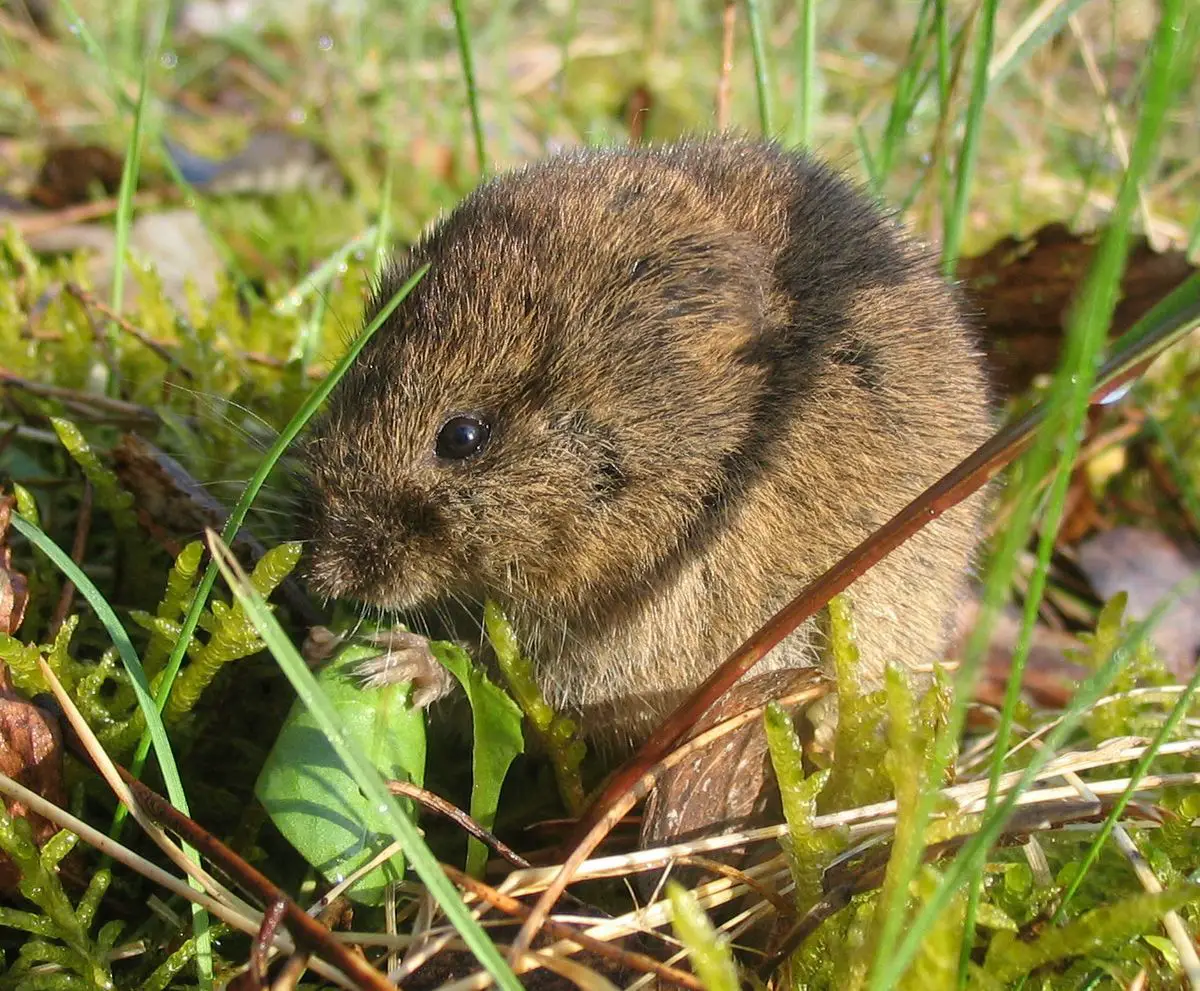

The presence of vole in the field it often causes concerns for farmers in certain areas of Spain. It is a small rodent that has a very short tail and is found in cultivated fields, preferring irrigated ones. It can wreak quite a bit of havoc on crops, which is why it is quite concerning for those farmers who want to grow their crops.
In this article we are going to tell you what voles are, what their habitat is and how we can repel them from our plot.
Key features


These voles are small rodents that are distinguished by having a very short tail and a brown back with a gray belly. It normally measures around 10 centimeters and weighs about 30 grams. Due to the demographic growth that this species has experienced throughout various places, such as the populations around the Duero Basin, they have begun to cause significant damage to crops.
As we have mentioned before, these rodents prefer irrigated fields that are mainly made up of beets, alfalfa, and sunflowers. Maintaining populations of predators has always been a good idea in order to promote the natural control of populations of any animal. If in a natural way the cycle is well established, it does not have to abound sea of one species than another, since they control each other. Therefore, it is important that the common prey of voles such as carnivores foxes, herons and small carnivores such as raptors and corvids are present in the same ecosystem.
In this way, the populations of both parties can be well controlled. For one thing, predators will have enough numbers to control vole species. On the other hand, the number of voles present will also be mimicking the number of predators.
Habitat and distribution of the vole


We mainly find this rodent in farm fields, on property lines, in gutters and in grasslands. Its area of distribution a few decades ago was not so extensive. Its existence is known only in the Cantabrian mountain range, although it has currently spread throughout the Duero Basin. We can also find them in the Pyrenees.
These animals usually live in quite visible colonies in the fields. They are placed in burrows that have several entrances and that are joined at the surface by narrow paths that are very easy to distinguish. By not producing a land survey they are different from common moles. The entrances of their burrows are linked together by galleries that lead to a specific nest with a spherical shape. It is usually located at a depth of between 20 and 30 centimeters. That month had where they stored the food.
Reproduction
The reproduction of these rodents takes place throughout the year. This is one of the problems that is why its area of distribution and abundance have expanded so much over the years. Only in the area of the Pyrenees has a seasonality in reproduction been observed. Females usually they are capable of giving birth every 3 weeks of gestation in a number ranging from 2 to 11 young. These individuals have their sexual maturity in one month in the case of females and in two months in the case of males.
As we can see, it is a species that matures too quickly and that becomes capable of reproducing in a short time. All this has led to demographic explosions that cause pests and that is mainly caused by the breakdown of the balance of the predator and prey cycles. Since predators are declining their populations they are not capable of controlling voles.
One thing that has been seen is that the autumn rains of greater intensity can harm the reproduction of this animal. However, we normally find stabilized populations with a density of about 5 to 10 individuals per hectare. It has been possible to count up to 1.200 individuals per hectare in periods of population explosion.
These rodents eat all kinds of vegetables that are within reach. They favor alfalfa fields. They are able to eat the beets in the ground and even cause root rot. We also find that they gnaw on the stems of sunflowers and cause the plant to moderate. Just rest for 2-3 hours a day. It is both a diurnal and nocturnal species.
They are able to guess what a field is being plowed at that moment and they move out of the field a border or ditch and wait for the work to finish before they can sit down again.
How to get rid of voles


To prevent the presence of these rodents in the field, some measures have been established:
- Continuous surveillance of crops and forest stands next to the plots where there is some suspicion of the existence of the vole.
- Modify the habitat where the vole usually lives, such as cleaning the gutters, borders and streams in such a way that they cannot find protection and limit their possibilities of spreading.
- It is convenient to maintain the boundaries with as few hedges and plants as possible that make this animal easy to hide.
- Those plots where there are crops should be kept under surveillance in a strip of between 5 and 10 meters in addition to monitoring the boundaries, ditches and streams.
- The land must be removed from all plots in order to eliminate possible colonies that are already established.
- If direct sowing is carried out in the plot, it is advisable to use a decompressor to destroy the galleries and burrows and minimize the impact on the structure of the soil profile. Let’s not forget that we want to obtain a good yield when harvesting crops.
- If the pest is too extensive and abundant, consider using certain pesticides with the least possible impact on crops.
I hope that with this information you can learn more about the vole.
